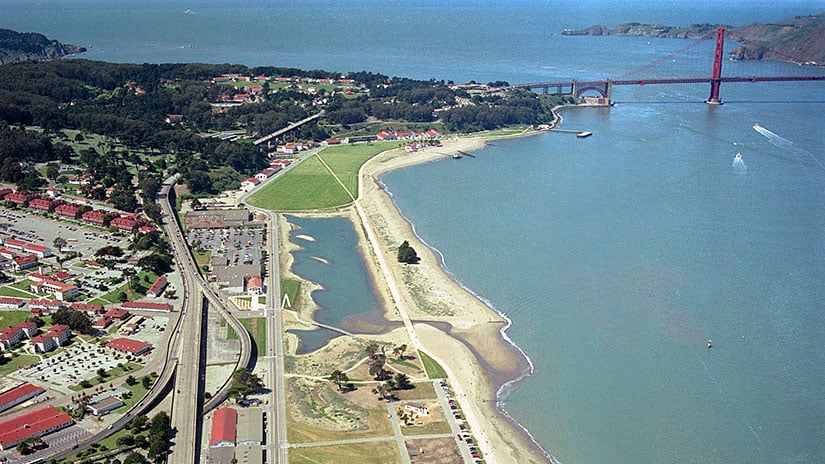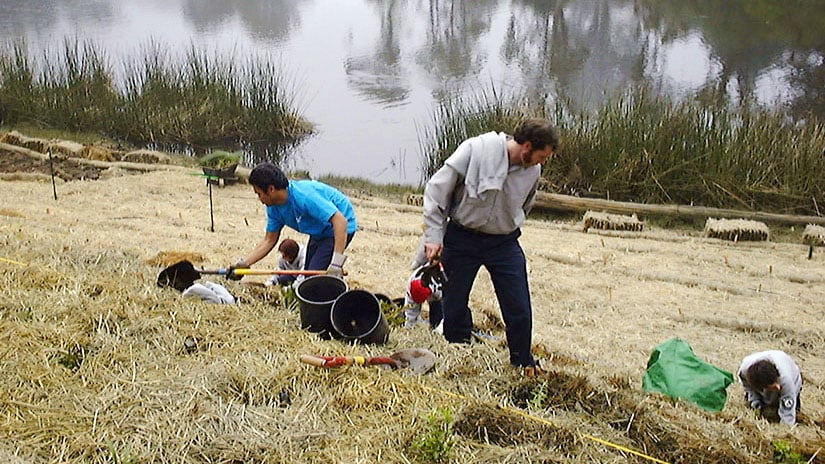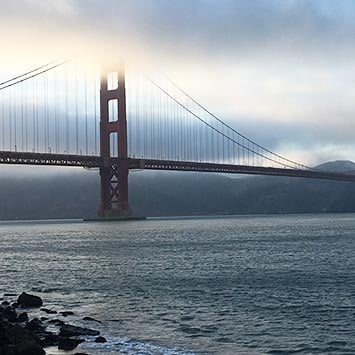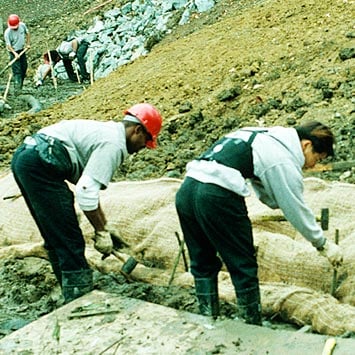Hiking Through History in The Presidio | San Francisco
What did San Francisco look like before Europeans got here? You’ll find the answer in the Presidio. This urban national park has dunes, marshes, a mountain lake, and a plant so rare we can’t disclose its exact location.
Exploring the Presidio is like opening a time capsule of San Francisco’s natural and human history.
With native ecosystems like a freshwater lake, sand dunes, serpentine bluffs, and a salt marsh, the Presidio offers views that harken back to the pre-urbanized San Francisco landscape.
Native Americans, including the Ohlone tribe, inhabited what would become the Presidio for centuries. But it was the Spaniards who officially established the Presidio when they arrived in 1776. Attracted by the Presidio’s location at the mouth of the San Francisco Bay, Spanish troops set up a military fort where the Presidio Officer’s Club stands today.
For more than two centuries, soldiers from Spain, Mexico, and the United States used the Presidio as a military base, until the land was transferred to the National Park Service in 1994.
To manage the Presidio as a national park and protect its biodiversity, in 1996 the United States government created the Presidio Trust, a federal agency that works independently in partnership with the National Park Service and the Golden Gate National Parks Conservancy.
Approximately 800 former military buildings have since been converted to residential and commercial properties, while many of the Presidio’s natural areas have been preserved and restored.
“Because of the diversity of the micro-climates, geography, geology, water, you find a diverse collection of different ecosystems and also a really rich collection of native plants and native animals,” Presidio Trust acting executive director Michael Boland said.
Among the Presidio’s largest restoration projects was rehabilitating Mountain Lake. Measuring 4 acres, Mountain Lake is one of two surviving natural lakes in San Francisco, and the only natural lake in the massive Golden Gate Recreational Area.
Human activity took its toll on Mountain Lake in the form of increased sedimentation, pollution, and the introduction of invasive non-native plant and wildlife species.

During its tenure at the Presidio, the United States Army planted groves of Tasmanian blue gum eucalyptus trees along Mountain Lake that dropped nutrients and toxins into the water. Pet owners dumped their turtles, frogs, and goldfish into the water. And due to a drastic increase in sedimentation, Mountain Lake’s original 30-foot-depth had been diminishing since Spanish cattle grazed its edges in the late 1700s.
By the time San Francisco’s Richmond District was developed and the adjacent Park Presidio Boulevard was constructed as part of Highway 1 in the late 1930s, nearly half of Mountain Lake had been filled in. Additionally, storm water runoff from the highway was polluting the lake.
“When the road was built along edge of the lake, the storm drains were directed toward the edge of the water,” Boland explained. “For about 75 years, lead from gas and chrome and zinc from tires was flowing into the lake, contaminating the bottom 6 feet of mud in the lake.”
Restoring the lake began in 2001 with the support of thousands of volunteers.
The surrounding eucalyptus trees were removed, and several native aquatic plant species were introduced to the lake, including sago pondweed and other submerged aquatic vegetation like leafy pondweed.
The lake’s non-native invasive aquatic organisms were removed, and replaced with native wildlife species, including western pond turtles, three-spined sticklebacks, Pacific chorus frogs, and freshwater mussels.
In order to deepen the lake and improve its water quality, contaminated soil was dredged from the lake floor and the highway’s storm drains were diverted. An army pumping station that siphoned water out of the lake to irrigate an adjacent golf course was also removed.
Located just northwest of Mountain Lake lie recently-restored sand dunes at the Marine Cemetery Vista.
The site was used by the United States Marine Corps in the late 19th century as a cemetery and was later converted to a landfill. Out of respect for the deceased, the human remains and debris were left undisturbed and the dunes were completely recreated above the cemetery.
According to Boland, rolling dunes originally covered the entire western third of San Francisco. The restored Marine Cemetery Vista sand dunes provide habitat for plant communities that can tolerate dry sandy soils and salty ocean breezes, including plants like sticky monkey flower and the rare, endangered San Francisco lessingia plant.
Heading further west along the Presidio’s Pacific Coast bluffs, a unique serpentine scrub ecosystem contains one the most endangered plants in the world, the Raven’s manzanita. Hidden in a rock outcrop, the Raven’s Manzanita in the Presidio is the last of its kind in the world that is growing in the wild.
Serpentine is the state rock of California and the harsh serpentine soil here makes it difficult for native and non-native plants alike to thrive. Yet several native plants have adapted to grow in the Presidio’s serpentine bluffs, including coyote brush, and California poppy—the state flower of California.
While a lack of development by the military helped preserve the Presidio’s serpentine bluffs, the Army left a much larger footprint at Crissy Marsh.
Crissy Marsh served as a waste dump for the Spanish. Later, its brackish waters were filled in entirely with mud from the San Francisco Bay for the 1915 Panama-Pacific International Exposition. Following the fair, the army paved over the marsh entirely and created an airbase.
It took restoration crews five years to remove pavement and fill from Crissy Marsh, and more than 100 native plant species were introduced to recreate a tidal salt marsh.
Since its completion in 2001, Crissy Marsh has become a hotspot for birdwatchers. The marsh provides habitat to more than 100 native bird species, including Caspian terns and great egrets, as well as the thousands of migrating birds that pass through twice a year along the Pacific Flyway.
“In the Bay Area, 90 percent of the tidal marshes have been destroyed for human developments,” Boland said. “The goal was to recreate the original marsh and dune ecosystem that would have been there when Native Americans were using the site more than two centuries ago. Restoring the ecosystem is the first piece, but over time, nature just fills the void. You build it, and they will come.”

— Sean Keenehan






